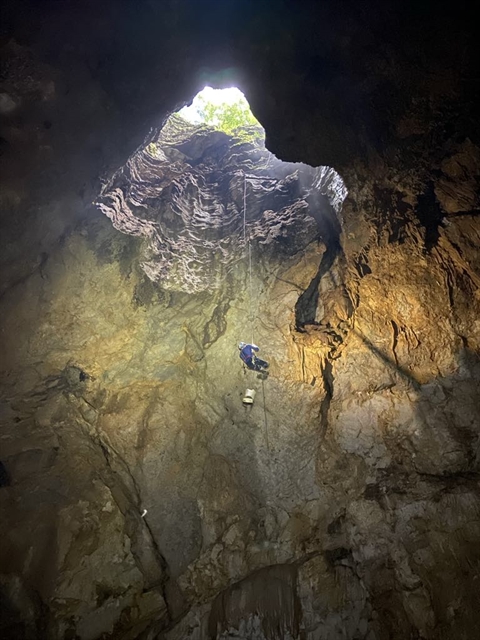 Life & Style
Life & Style

 |
| A new cave found in the expedition by experts from United Kingdom and Việt Nam last month in Phong Nha - Kẻ Bàng National Park, central province of Quảng Bình. Photo courtesy of the expedition team |
HÀ NỘI — Twenty-two caves have been discovered in Phong Nha - Kẻ Bàng National Park in the central province of Quảng Bình in an expedition by experts, according to the park management board on April 14.
The joint expedition carried out by experts from United Kingdom and Việt Nam last month located the additional caves in Minh Hóa, Bố Trạch and Tuyên Hóa districts within the park.
"The newly discovered caves have only received preliminary identification, location and description," said Phạm Hồng Thái, director of the board.
"Further detailed surveys and studies are still needed to properly assess their values and inform conservation and sustainable development measures.
"In-depth surveys and research will help us to make the right decisions based on accurate and relevant information.
"Discovering dozens of caves is meaningful because it further clarifies the outstanding value of geology, geomorphology and hydrology of the park, which is a UNESCO-recognised World Heritage Site, and at the same time is a valuable resource for tourism development for local people."
The expedition mapped a total of 3,550m from the 22 newly discovered caves and three previously known caves that were further surveyed, including seven caves in the core zone, seven caves in buffer zone and the rest in neighbouring areas.
The four longest caves include Va Cave (516m) and 12/2 Dry Cave (404m) in Phong Nha - Kẻ Bàng National Park, Vuc Hung Cave (430m) in Thường Trạch Commune, buffer zone of the National Park, and Ong Dau Cave (572m) in Lâm Hóa Commune, Tuyên Hóa District.
The Phong Nha - Kẻ Bàng National Park in the central province of Quảng Bình has twice been honoured as a World Natural Heritage site.
The park was recognised as a World Natural Heritage Site in 2003 by the World Heritage Committee under the United Nations Educational Scientific and Cultural Organisation (UNESCO) for the criteria of exceptional global value in terms of geology and geomorphology.
In 2015, UNESCO members agreed to add the criterion of outstanding value representing the evolutionary and development processes of terrestrial ecosystems, possessing meaningful natural habitats for biodiversity conservation.
Over the years, the park management board has actively co-operated with domestic and foreign organisations to carry out scientific projects in the fields of environment, geology-geomorphology, biodiversity and culture-history to preserve the heritage for the local social and economic development.
With about 500 caves discovered, Quảng Bình is renowned as the country's kingdom of caves. Since 2003, experts from the Royal British Cave Association have surveyed and discovered 425 caves in seven areas and systems, of which 389 caves have been measured with a total length of 243 km. The most prominent was the discovery of Sơn Đoòng, the world's largest cave, while Én and Pigmy caves come in at second and fourth.
There are over 40 caves in the locality which are open to tourists. The site is important in caving research in the region, and promoting the image of Việt Nam, Quảng Bình, and Phong Nha-Kẻ Bàng around the world. — VNS




